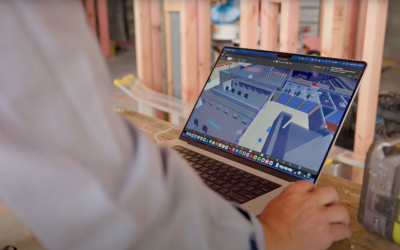Welcome to the
BIMSafe NZ Web Portal
This portal provides guidance articles and case studies for the integration of health and safety into BIM models for the construction industry in New Zealand.
This resource is continuously evolving, and we encourage you to contribute your expertise and experience. Your insights can help shape and expand this valuable knowledge base for the benefit of the entire New Zealand construction community.
Select your role
Find out how BIMSafe can work for you.
BIMSafe can be used by all stakeholders in the construction process, whether in procurement, design, construction, or facilities management. By selecting your specific role, you can view resources targeted to different health and safety tasks and BIM applications.
Guidance articles
Case studies
Court Theatre: Creating a culture of collaboration
On the Court Theatre project, the use of Building Information Modelling (BIM) has fostered a more collaborative culture among subcontractors, encouraging them to consider the work of other trades and coordinate their efforts more effectively. By providing a holistic view of the project and enabling better communication, BIM has helped to break down the “first in best dressed” mentality and promote a more cooperative approach to construction delivery, leading to improved safety and efficiency on site.
Court Theatre: Pre-planning for safer work
On the Court Theatre project in Christchurch, New Zealand, the use of Building Information Modelling (BIM) enabled the project team to proactively plan for safer working conditions. By leveraging 3D modelling and collaborative processes, the team identified potential issues early and developed strategies to mitigate risks. This approach led to reduced need for working at height, minimised manual handling, and optimised installation sequences, resulting in a safer and more efficient worksite.
Dunedin Hospital Outpatients Building: Subcontractor modelling and prefabrication
DBC Building Services used Building Information Modelling (BIM) and advanced manufacturing techniques to improve safety and efficiency in the mechanical services installation for the Dunedin Outpatients Building. Using 3D modelling and direct-to-fabrication processes, the team significantly reduced on-site work at height, improved accuracy, and created a safer work environment.
ACC Ōtepoti: Contractor methodology design and hazard ID
On the ACC Ōtepoti project, a 5.6-meter void existed below the service deck on the top floor. The use of Building Information Modelling (BIM) enabled the project team to identify and address potential health and safety hazards associated with wall construction and services installation onto this space. By using the 3D model to facilitate open communication among stakeholders, the team could thoroughly investigate and address potential risks and possible alternatives before construction began, leading to a safer and more efficient building process.
ACC Ōtepoti: Clash detection for safer services installation
On the ACC Ōtepoti project, the use of Building Information Modelling (BIM) and collaborative processes enabled the project team to focus on potential health and safety hazards that could occur during construction and installation of services, particularly in ceiling spaces. Working with a federated 3D model and facilitating open communication among stakeholders, including contractors and subcontractors, the team could thoroughly investigate and address potential risks before and during construction, creating a safer and more efficient work environment.
Helix Global: Prefabricated housing using BIM
Helix Global is pioneering New Zealand’s first fully off-site manufactured residential home. By leveraging Building Information Modelling (BIM) technology, the company has been able to address the unique challenges associated with prefabricated construction, transportation, and on-site assembly. The use of BIM has enabled Helix Global to enhance safety throughout the entire process, from factory manufacturing to final installation.
BIMSafe NZ is a three-year, $1.7m collaboration between the building industry and government
Our aim is to reduce accident and injury rates in New Zealand through greater understanding, communication and mitigation of risk.






